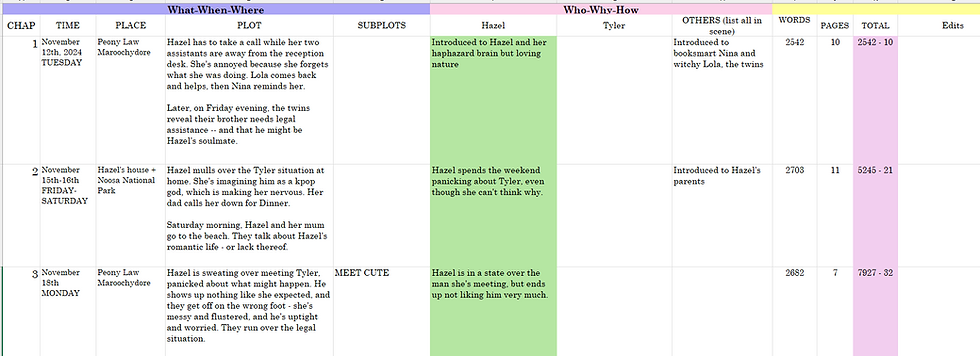What Does ‘Show Don’t Tell’ Actually Mean?
- Poppy Solomon

- Sep 14
- 4 min read
Updated: Sep 15
If you're a writer, you probably hear 'show don't tell' ALL the time. Without an editor or seasoned writer explaining to you in clear terms what that actually means, it's easy to get lost trying to figure it out. Today, let's clear it up!

I'm sure you've heard the saying 'A picture is worth a thousand words.' What about 'Actions speak louder than words'?
I tend to liken showing versus telling to those sayings, because that's what the concept is all about. Physical proof - showing - says more than words - telling. Of course, we're talking about books here, so of course, all prose is going to be in words. But when you choose to use showing phrases rather than telling phrases, your narrative becomes more effective and engaging.
Okay, how do we do it? Let's see . . .
What is Showing Versus Telling, and how do you do it?
What's a Show and what's a Tell?
When we tell the reader something in a book, we're stating it factually. Slippers the cat begged Poppy for food because he was hungry. (Is this just what's happening in my life right this second? Maybe.)
When we show the reader something, however, we offer proof in the action and let the reader make their own determination. Slippers meowed and wound around Poppy's ankles, his stomach grumbling. I don't need to tell you he's a cat, because you can tell from his meowing and body language, and I don't need to tell you he's hungry, because you hear his stomach grumble.
This is the magic of showing! Showing immerses the reader in the story. Rather than explaining what's happening to them, they're able to really sense it.
Showing is done through:
The five senses (sight, touch, taste, smell, and sound)
Body language
Inner feelings
Direct thoughts and speech
Specificity in description
Can you show through dialogue?
Showing isn't just in the action. Well, dialogue is technically action, but we tend to consider it separately in terms of fiction. Thing is, it isn't just about the character doing the action of speaking; the actual words they say, and how we write them, can do a lot of legwork in making the narrative more engaging and realistic.
Let's say Jenna is upset because Bill mentioned her eyeliner streaked - but he waited until they got in the car and it was too late to turn back and fix it.
Telling: 'Oh, Bill,' she yelled, upset. 'I look silly. Why didn't you tell me?'
Showing: 'Bill! I-- I look a fright!' She swiped at her eyes. 'How could you not tell me? What am I supposed to do . . .'
The told version sounds quite passive. She's saying words that don't sound like yelling, so we rely on the dialogue tag to tell us. The shown version, however, doesn't need a dialogue tag to immerse the reader in how Jenna feels. With exclamation marks and stuttering, we see her frustration. In the action, we see her try to fix it, and following this, we see her sounding simply sad, trailing off.
Is it okay to tell sometimes?
Telling should never be removed from your writing toolkit. It's a vital part of storytelling because it clearly and concisely states things we don't want to spend a lot of time on. Showing tends to be slower and takes up more words.
I recommend telling when it isn't overly important for the reader to be immersed in something or believe in something. For example, if a barista serves your main character a hot chocolate once and then never returns to the page, we don't need a paragraph describing them in shown detail. Telling is also useful when the pacing calls for simple, fast language. In the middle of a fight scene, we don't have time to describe the five senses poetically and immersively - the immersion is in the fast-paced prose.
Showing works best when it's balanced with other writing tools and allowed room to breathe. You never want to do too much of one thing and tire your reader.
Want to Learn More?
I hope you learned something from this blog! Showing and telling can be confusing to many writers, but now you should be able to move forward and implement more showing in your writing.
Learn more about the 'show don't tell' rule in my writing guidebook, How to Edit Your Own Novel, or contact me today to learn how I can help you improve your writing with my editing and mentoring services.
Poppy Rose Solomon’s creative pursuits are a manifestation of her passions for the whimsical and magical. Evoking inspiration and escapism is the goal of her storytelling. From her home in Lutruwita/Tasmania, she freelances as a YA editor and coach through her business Poppy’s Pages. Woken Kingdom is her first series, with plenty more novels to come, and she has also released a book to help other authors, titled How to Edit Your Own Novel.






Comments